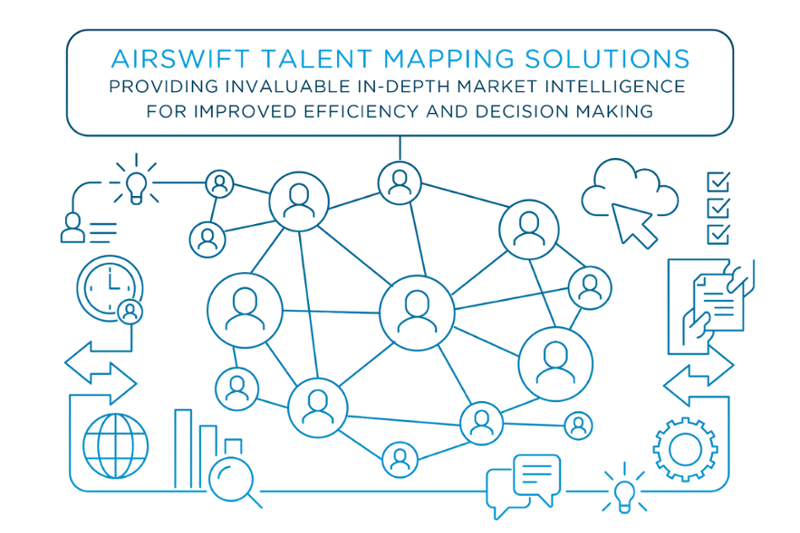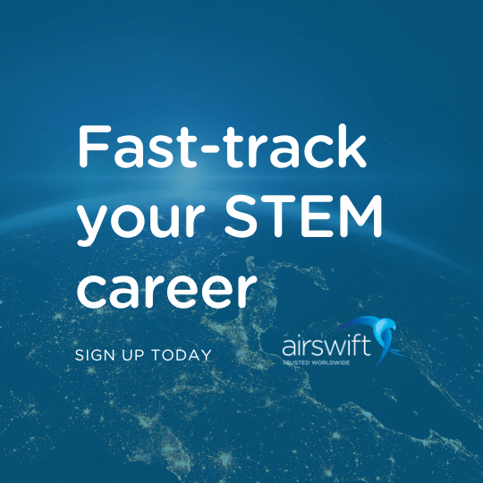
By
Tomás Battaglia
August 15, 2023
Updated
September 25, 2024
Is talent mapping the answer to entering new markets?
Discovering and retaining talent is becoming increasingly difficult in today's landscape. The duration and expenses associated with hiring have surged, while trust in the recruitment sector has waned.
These factors present obstacles for small and medium enterprises (SMEs) seeking to expand into new markets. However, SMEs can overcome these challenges by adopting a strategic recruitment approach, such as talent mapping.
Why is it becoming harder to find talent for niche industries?
The average time to hire has been increasing over the past four years. It now takes around two months to get a candidate in place. Then there are onboarding and training times to account for. However, global mobility actions can help immensely with niche talent acquisition.
While vacancies go unfilled, huge opportunity costs can overwhelm your teams. This drastically impacts productivity, leading to missed deadlines, staff turnover and reduced team morale.
Additionally, the cost of a bad hire is substantial. Hiring missteps can cost up to three times higher than the salary paid.
The following factors make it challenging to hire top talent:
- The Internet has made it easier to advertise and apply for jobs. This increases the volume of unsuitable candidates applying and makes it easier for competitors with digital marketing expertise to attract the best talent.
- Globalisation and remote working have increased competition and the expectations of candidates with specialist skills.
- A lack of dedicated job boards makes it harder to attract people with experience in your industry.
For companies working with technology, the skills and experience needed might be very specific. Furthermore, you are competing with global players who have the funds and brand to attract talent like a magnet.
How can SMEs and start-ups with limited resources compete for talent?
Businesses today need more than a random set of CVs on their desks—they need a recruitment process that offers a strategic, laser-focused approach to specific skill sets.
To address this, it’s essential to ask:
“How can recruiters support businesses aiming to expand into new markets or gain a competitive advantage?”
When exploring this, Airswift embarked on a journey to understand the hiring challenges senior leadership teams face in the pump sector. Through open and honest discussions, we uncovered key insights.
The overwhelming response? Most companies had lost confidence in their recruitment suppliers.
Here’s why:
- Many recruiters were generalists with no in-depth knowledge of the talent market for that industry.
- The contingent approach meant recruiters were focused on volume, filling as many roles as quickly as possible without spending time on each position.
- Traditional agencies chased fees rather than listening to what the client needed.
Clients found it challenging to understand their recruitment partners' sourcing methods, and this lack of transparency made it harder to align hiring with future talent needs.
One approach that has helped solve these challenges is providing clients with a visual map of future talent, offering real-time visibility into every step of the process via cloud technology.
At Airswift, we call this a talent mapping solution.
What is talent mapping?
Talent mapping is a proactive recruitment strategy that helps businesses identify and assess the skills, competencies, and potential of individuals within an organisation or industry. It involves creating a comprehensive overview of the talent pool available within a specific company or industry sector.
Ultimately, the final objective of the talent mapping process is to find high-potential employees, whose future development aligns with your strategic priorities.
The primary goal of talent mapping is to understand the available talent pool and align it with the organisation's strategic objectives. It helps identify high-potential individuals, address talent gaps, and ensure a steady talent supply for critical roles.
What are the pros and cons of talent mapping?
Talent mapping can be highly effective for organisations looking to build a pipeline of top-tier talent for future roles. However, like any approach, it has its strengths and limitations, which should be considered based on your hiring needs and goals.
The benefits of talent mapping are:
- Search-driven and strategic: Helps businesses stay ahead by identifying ideal candidates who align with their business goals well in advance.
- Focused on niche, specialist, and hard-to-find talent: This is especially useful for roles where highly specialised skills are essential, making it easier to locate hard-to-reach talent.
- Tailored to meet specific client needs through a consultative approach: Ensures that the talent mapping process fully aligns with immediate and future business goals by taking a more consultative, partnership-driven approach.
The disadvantages are:
- Not suitable for urgent, short-term hiring needs: This recruitment strategy is more suited to long-term planning rather than quick hires.
- May be too expensive for lower-level positions: The investment may not always be justified for entry-level or lower-tier roles.
How does a talent mapping strategy work? Case study
To explain the talent map process, here is an example of a talent mapping exercise for a recent client project. They were looking for a centrifugal design engineer and a fluid vacuum design engineer:
![]() The process
The process
- Requirement gathering on-site
- Building the project team
- Research and competitor benchmarking
- Expanding our search criteria
- Shortlisting
- Interview process
- Onboarding
Step 1: Understanding the specific requirements
We flew to Germany and spent a whole day on-site, meeting the various teams and understanding their culture. This helped us uncover the small intricacies in their business that made them unique.
We were incredibly impressed with the company culture and were passionate about what they were trying to achieve.
Step 2: Building the team
When we returned to the UK, we established a project team of consultants with expertise in resourcing for process manufacturing.
Step 3: Research & competitor benchmarking
Then, things started to take shape. Within a week, we had identified and profiled every technical design engineer working within 75km of their office.
The key details we looked for were:
- Their current professional situation
- The likeliness of them moving companies
- Experience
Importantly, we also discovered what was being said about our client in the marketplace. Their employer branding proposition gave us an insight into market perceptions and the ability to attract talent.
This information allowed us to redesign the business's hiring process, ensuring that candidates were given a smooth and satisfactory interview experience.
Step 4: Expanding our search criteria
After spending two weeks on the search, we expanded the radar to 250km. This allowed us to find out which cities harboured different skill sets and provided interesting insight into other businesses. It also helped our client understand their positioning more clearly.
Step 5: Shortlisting
After we had completed our research and assessed candidate openness to relocation, we trimmed the shortlist from 250 candidates to the best six.
This ensured we had a comprehensive understanding of client-candidate fit. We assessed which candidates were best fit for the location, role, salary, and family commitments. Doing this process ourselves meant that the client could save time and focus on running their business.
Step 6: Interview process
We remain involved in organising the interviews and screening the candidates before they are considered.
We do this using sets of questions developed by ourselves and the client. We act as the middleman between the candidate and client and represent both parties to the highest standard.
Time is a huge factor when trying to find the right candidate.
Nothing is worse than losing out on a perfect candidate because they accept another offer due to a timing conflict. We recommend hiring managers always clear their diaries for a candidate who can take your business forward.
Step 7: Onboarding
This was the essential final stage of making a strategic hire. We ensured that we were on top of all the correct paperwork and that the client and candidate were in constant contact upon the signed contract.
We often provide relocation support for candidates from outside the area, as it can be hard to settle in a new city and environment. We ensure this is planned and communicated clearly to assure our candidates that we will help.
The results
Our client gained access to a team of professionals that can expand their product line, meaning they have been able to tap into a $28 billion market. This has given them an edge over their European competition and will generate between €6-8 million in sales over the next three years.
Maximise your global expansion plans with talent mapping and Employer of Record support
Talent mapping is a powerful tool for companies looking to align their recruitment efforts with long-term business goals. By identifying future talent and filling critical roles, organisations can gain a competitive edge in the global talent market. However, this requires a strategic approach, with a deep understanding of the industry and workforce needs.
Leveraging an Employer of Record (EOR) for businesses looking to expand internationally can streamline global talent management. An EOR handles essential human resources functions such as compliance, payroll, and benefits, allowing companies to focus on finding and integrating the right team members.
This support ensures the recruitment process aligns with local regulations, making global expansion efforts more seamless. By combining talent mapping with EOR services, businesses can confidently build high-performing teams across new markets while minimising risk and administrative burdens.
Contact us to find out more about our comprehensive workforce solutions.

